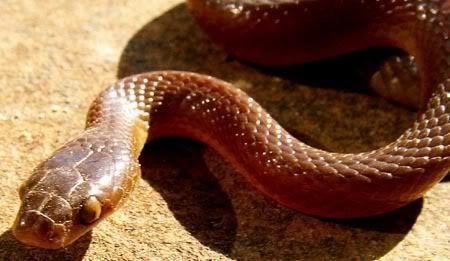Family Colubridae Scientific name Inyoka swazicus Rank Species | Class Reptilia Suborder Serpentes Subfamily Boodontinae Phylum Chordata | |
 | ||
Similar Lamprophis, African house snake, Boaedon, Boaedon capensis, Boaedon lineatus | ||
Inyoka program duploc com premiere
Inyoka is a monotypic genus of southern African colubrids. The word "inyoka" is Nguni for "snake". These snakes were previously grouped in the genus Lamprophis but were found to be closer related to Hormonotus; a substantial genetic divergence between them and a 1900 km gap between their geographic ranges meant a new genus was erected for Lamprophis swazicus, the sole species of the new genus.
Contents
Inyoka echidna
Species
Inyoka swazicus is commonly known as the Swazi rock snake or Swaziland house snake. It is found in the eastern South Africa and in Swaziland. It inhabits rocky outcrops in grassland and savanna at altitudes of 1,400–1,900 m (4,600–6,200 ft) asl. Although listed as a "Lower Risk/Near Threatened" species by the International Union for Conservation of Nature (IUCN), it is only considered of "Least Concern" in the South African Conservation Assessment of Reptiles in view of its relatively wide distribution and low level of anthropogenic disturbance in its habitat.
Inyoka swazicus can grow to a maximum total length of 90 cm (35 in). The head is small, dorso-ventrally flattened, and broader than neck and distinct from it. Eyes are large, protruding, and with vertically elliptical pupil. They are non-venomous.
